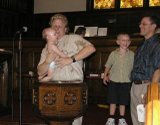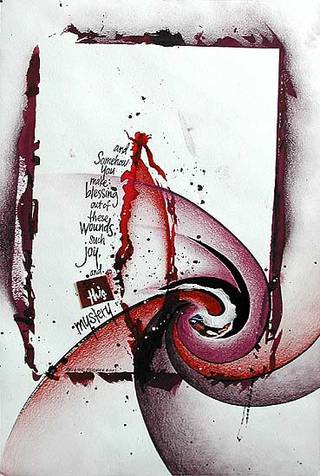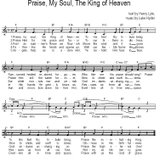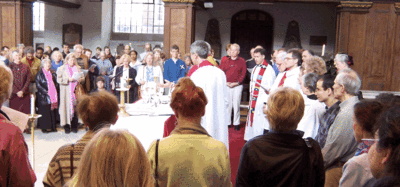 Dr. Steven Taylor is the founding pastor of Graceway Baptist Church in Ellerslie, New Zealand. He has a PhD on the Emerging Church and a Masters in Theology in communicating the cross in a postmodern world. Steve recently did a course at Fuller Seminary entitled “Communicating the Biblical Text in a PostModern Culture” in July.
Dr. Steven Taylor is the founding pastor of Graceway Baptist Church in Ellerslie, New Zealand. He has a PhD on the Emerging Church and a Masters in Theology in communicating the cross in a postmodern world. Steve recently did a course at Fuller Seminary entitled “Communicating the Biblical Text in a PostModern Culture” in July.
He argues that to communicate the biblical text for today’s context requires one to “incarnate, indwell, our culture.” Taylor goes on to use the phrase “DJing” with respect to the community. A record DJ learns the historical stories (old records) and uses them authentically in contemporary culture and integrates them into the community's stories. There is too much to summarize here, but do look for his book “The Out of Bounds Church: Learning to Create a Community of Faith in a Culture of Change” from Zondervan.
Taylor cites Bono of U2 as a person who effectively DJs today. According to Taylor, Bono is in fact a worship leader for over 40,000 people; Bono recontextualizes the biblical text and leads concert goers into a time of community worship and prayer. Taylor plays the “Vertigo ‘05” DVD and shows us how Bono is leading worship. This intrigued me to the point that Dr. Taylor and I discussed this further after the workshop. The following is from Steve’s article “7 Things I learnt from Bono about Worship Leading.”
1. Connect uniquely. In the Vertigo DVD, Bono speaks about Chicago and his memories of Chicago. He makes a unique connection with context, day, and time.
2. Engage through familiarity. Bono includes songs that resonate with previous experiences and previous encounters.
3. Use repetition to call forth prayer. Bono uses the repetitive “Hallelujah.” It is easy to sing. The simple repetition enables the audience to sing with the band.
4. Secure a 5th (visual) band member. U2 now has a 5th member of the band to add a visual layer to the experience. A wise worship leader will look to add not just singers or musicians, but a “visual” person to their team.
5. Create hope by drawing the best from the past. Bono tells the audience in the Vertigo DVD, “We as a band are looking to the future. We’re taking the best of the past and moving forward with hope.”
6. Plan participation. Bono can draw one boy from the audience to sing to, one woman from the audience to dance with. He uses repetition to call forth prayer and encourage congregational singing.
7. Invoke passionate practices. Bono invites the audience to hall out their cell phones and to text “Make Poverty History campaign.” A worship leader turns singing into action. He turns entertainment into justice.Continue reading...





